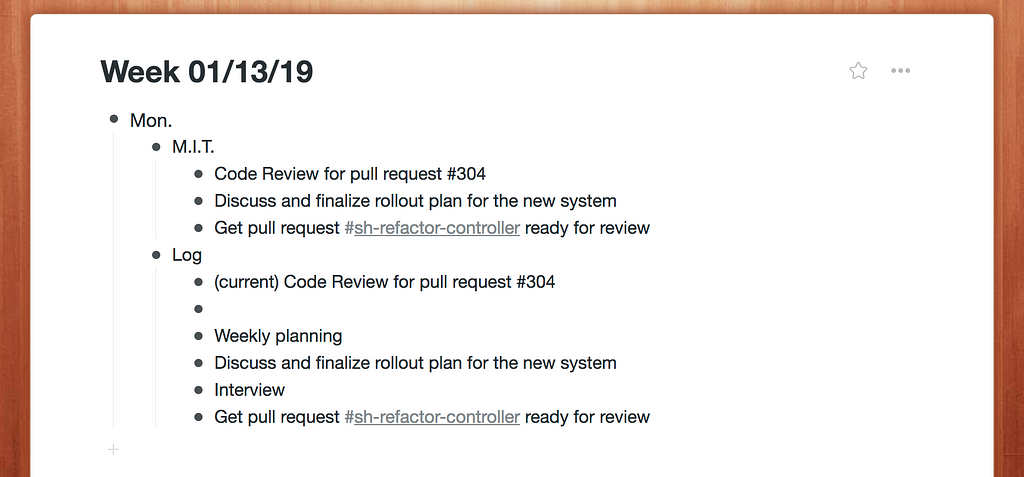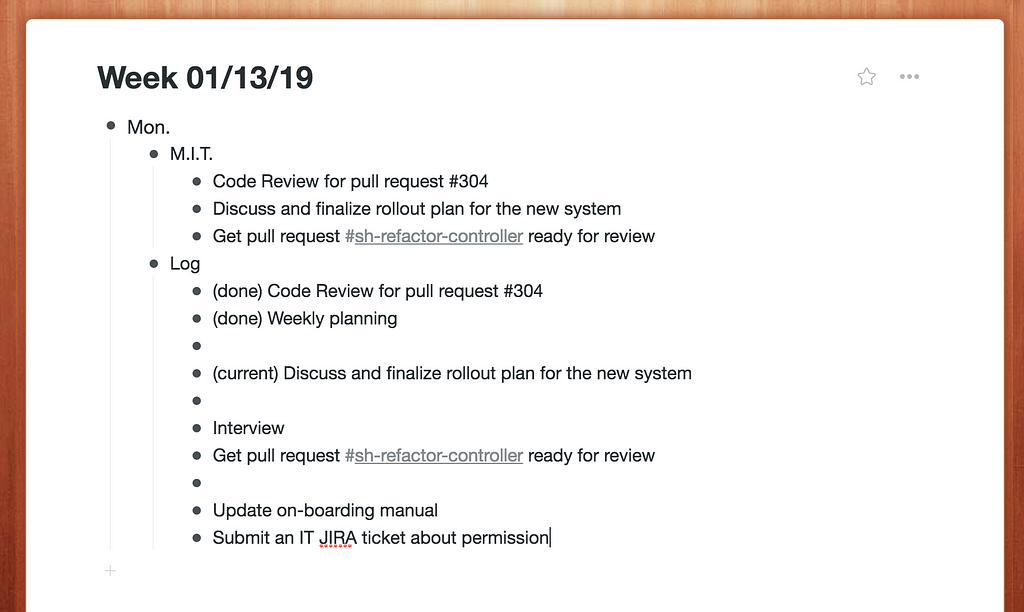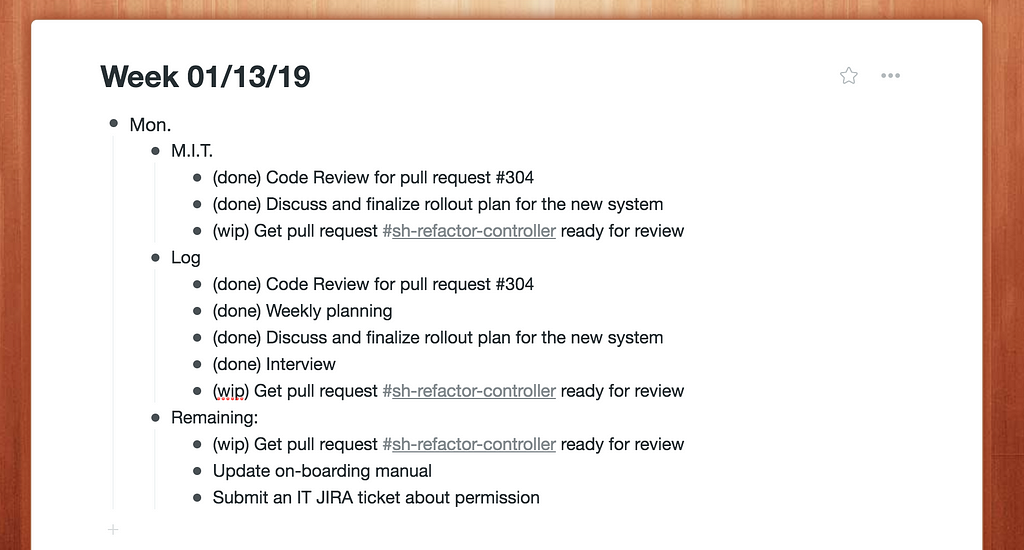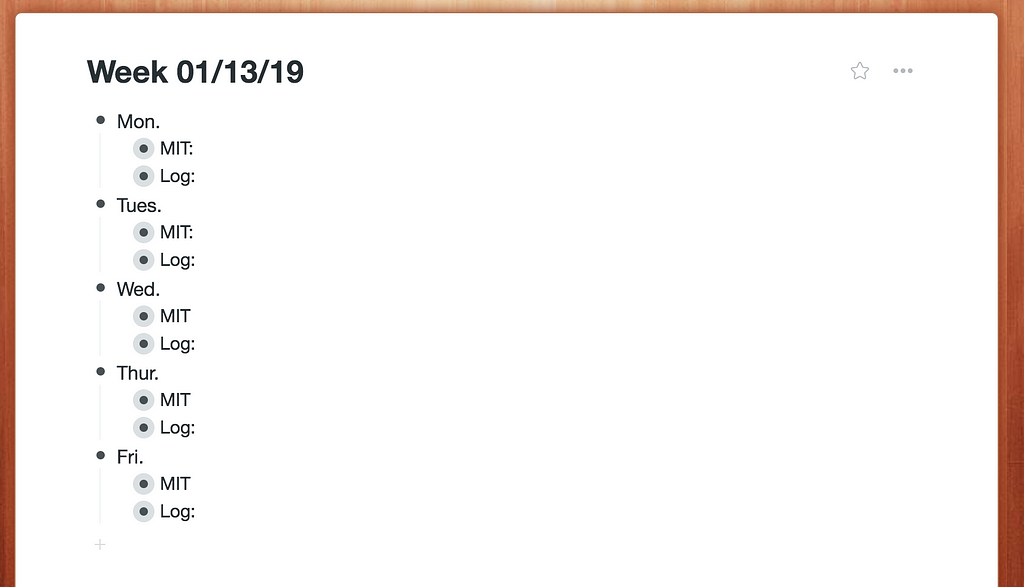
Have you ever felt exhausted after a day at work? At the end of a busy day, you couldn’t remember how you spent your time. All you knew was that there was more to be done tomorrow. You were tired, overwhelmed, and even a bit frustrated — the to-do list always out-ran you.
You might have wanted to review your day and see how to be more productive. But the pain you had in your head from a long day was so strong that all you could do was drag yourself home and collapse on a couch until it’s time for bed. The next day, the same story repeats and it’s a never ending cycle.
That was my life over the past few months. As my role evolves, coding is no longer my sole responsibility. My days often consist of a mix of interviewing, various meetings, code reviews, ad-hoc discussions, and coding. Often, at the end of a day, I feel like a failure because I didn’t make as much progress on my project as I had wanted to. All I could think of was all the remaining work that needed to be done, which could be discouraging since I never seemed to be able to get to the bottom of the to-do list.
This troubled me for a long time. I knew objectively that I worked harder than ever. After a day of hard work, I deserve to feel accomplished and proud.
How the M.I.T technique helps me
Things changed after I discovered the M.I.T. technique: a powerful way to keep me focused and productive throughout the day.
A Most Important Task (MIT) is a critical task that will create the most significant results. Every day, create a list of two or three M.I.T.s, and focus on getting them done as soon as possible. Keep this list separate from your general to-do list. – The Personal MBA
Here is how I apply it to my day-to-day work. After I get to the office, first thing in the morning, I open my note-taking app (I use Workflowy). First off, I start a new section for the day and write down two to three most important tasks I want to focus on and get done under the M.I.T. section. Then I list out tasks, both M.I.T.s and non-M.I.T.s, in the order I plan to do them under the log section. I then check my schedule for the day and plan blocks of time for the M.I.T.s. I will try to get them done as soon as possible.
Lastly, before actually starting to work, I tell myself as long as I get the most important tasks (M.I.T.s) done, it’s a productive day that I should be proud of. Finishing these tasks is my definition of success for the day.
Here’s an example of how my note will look like:

As the day goes, new tasks come in. According to their urgency and importance, I add them to the log section. Here is how it might look like in the middle of the day:

My M.I.T.s for the day are flexible and can change. It’s totally fine if I need to swap a M.I.T. with a new one or even decide to not work on it and move it to another day altogether.
At the end of the day, I will update the progress of all the tasks, especially the M.I.T.s, and leave a note for tomorrow.
Here is how it might look like at the end of the day:

It feels great to be able to see all the tasks you worked on and how you spend your time at the end of a hard working day. (I also create a Google calendar event to log how I spend my time after I finish a task.)
Three great benefits of this approach.
- Listing M.I.T.s at the beginning of a day sets the tone for the day. The M.I.T. list is an anchor of my day. It keeps me focussed and calm. No matter how many meetings I have to go to or how many ad-hoc tasks pop up, I always return to my M.I.T. list and remind myself these are the focus of my day. If important things come up, I evaluate them with my M.I.T. list and update the list accordingly.
- Reviewing my log at the end of the day is an opportunity to reflect on how today went and identify areas of improvement. Besides that, it’s a time to celebrate all the tasks I accomplish and feel proud of my hard work. Software development is a marathon, not a sprint. It’s important that we regularly acknowledge the great work we have done and celebrate the small successes we have along the way. Before using this technique, I often felt overwhelmed and discouraged because I was too focused on the end goal and all the remaining work and failed to acknowledge the progress I made. This technique helps me enjoy every step of the journey.
- Having a log of how I spend my day makes weekly and monthly planning easier. At the end of each week, I can see how I spend my time and if it’s aligned with my priorities.

There are other areas in which I can improve my productivity and achieve better work-life balance while getting more done. I will explore and experiment with different techniques and share them on my personal blog when I find something interesting. Subscribe if you’re interested and don’t want to miss out!
My career plan for the year is to grow into a tech lead. I’m excited about all the learnings ahead and would love to share this journey with you in a brutally honest fashion. I will be sharing my weekly learnings on my personal blog.
In the next few months, I will focus on growing in the following areas, so you can expect to see learnings related to them:
- focusing on the big picture of the project instead of near-term implementation details;
- balancing my efforts between leading projects and coding;
- work-life balance for long-term productivity;
- the human side of software development: making sure everyone riding with me enjoys the ride and feels fulfilled and inspired.
Never feel overwhelmed at work again: how to use the M.I.T. technique was originally published in freeCodeCamp.org on Medium, where people are continuing the conversation by highlighting and responding to this story.
from freeCodeCamp https://medium.freecodecamp.org/never-feel-overwhelmed-at-work-again-how-to-use-the-m-i-t-technique-70d132aad0cc?source=rss—-336d898217ee—4
